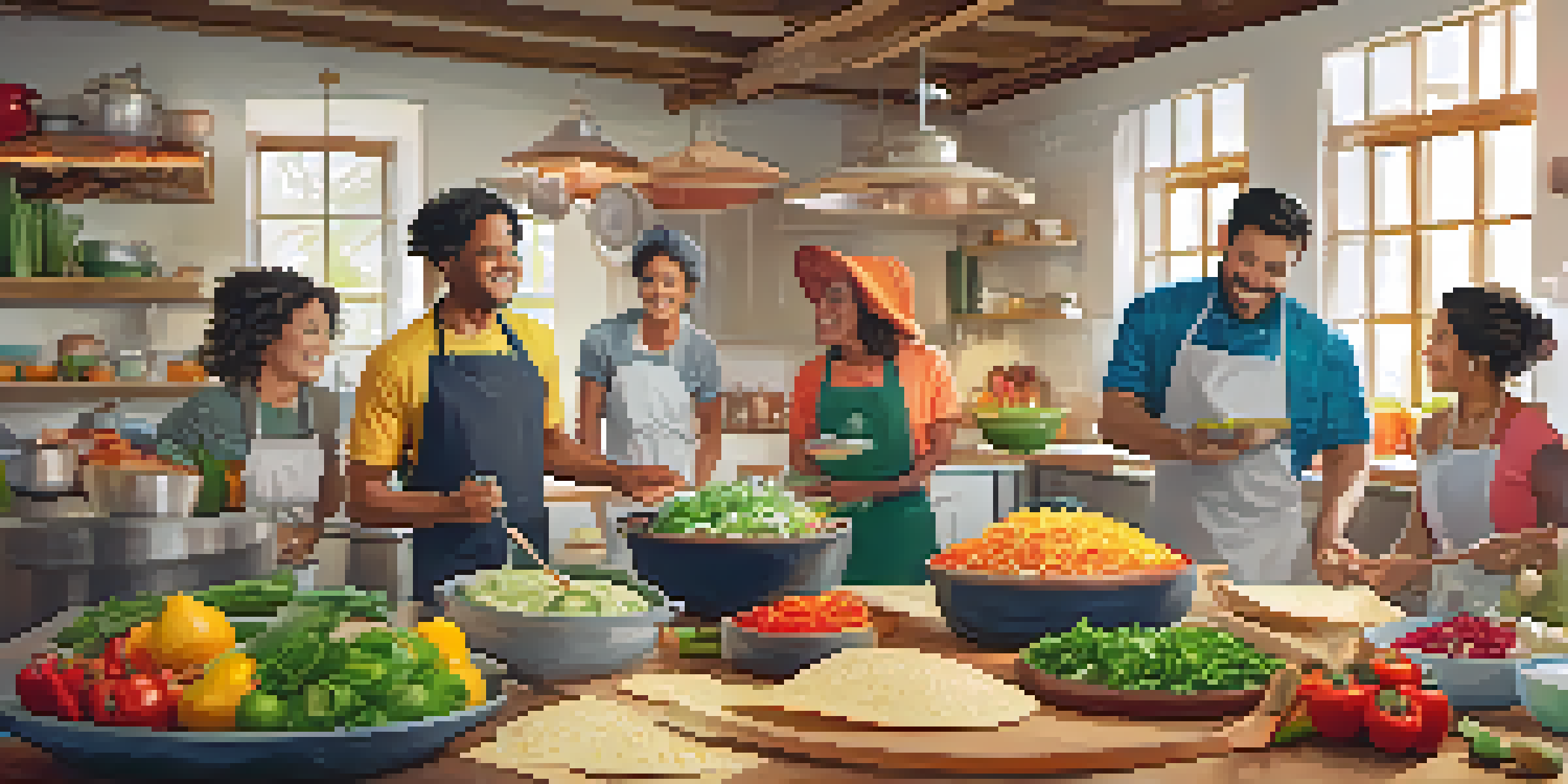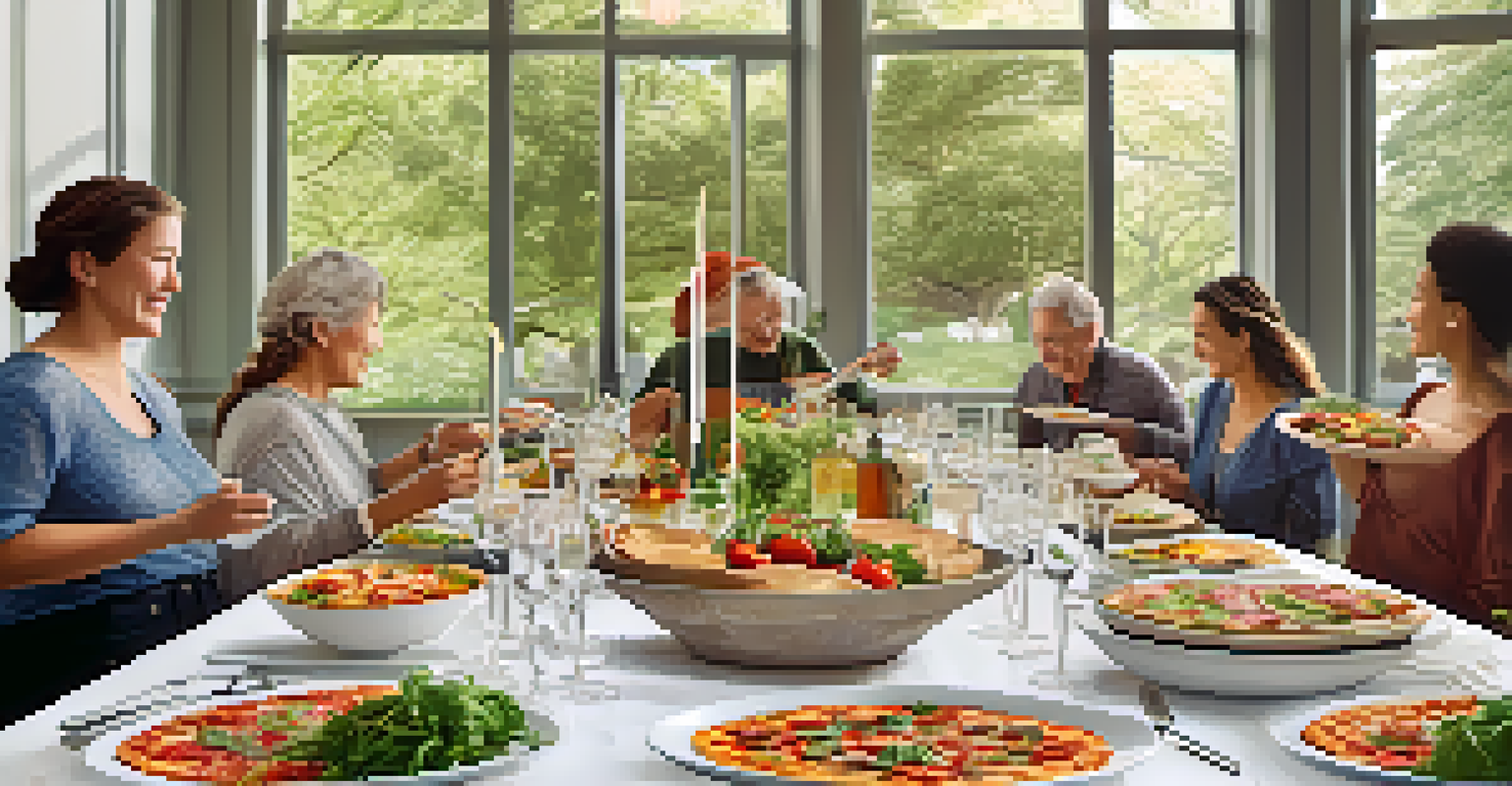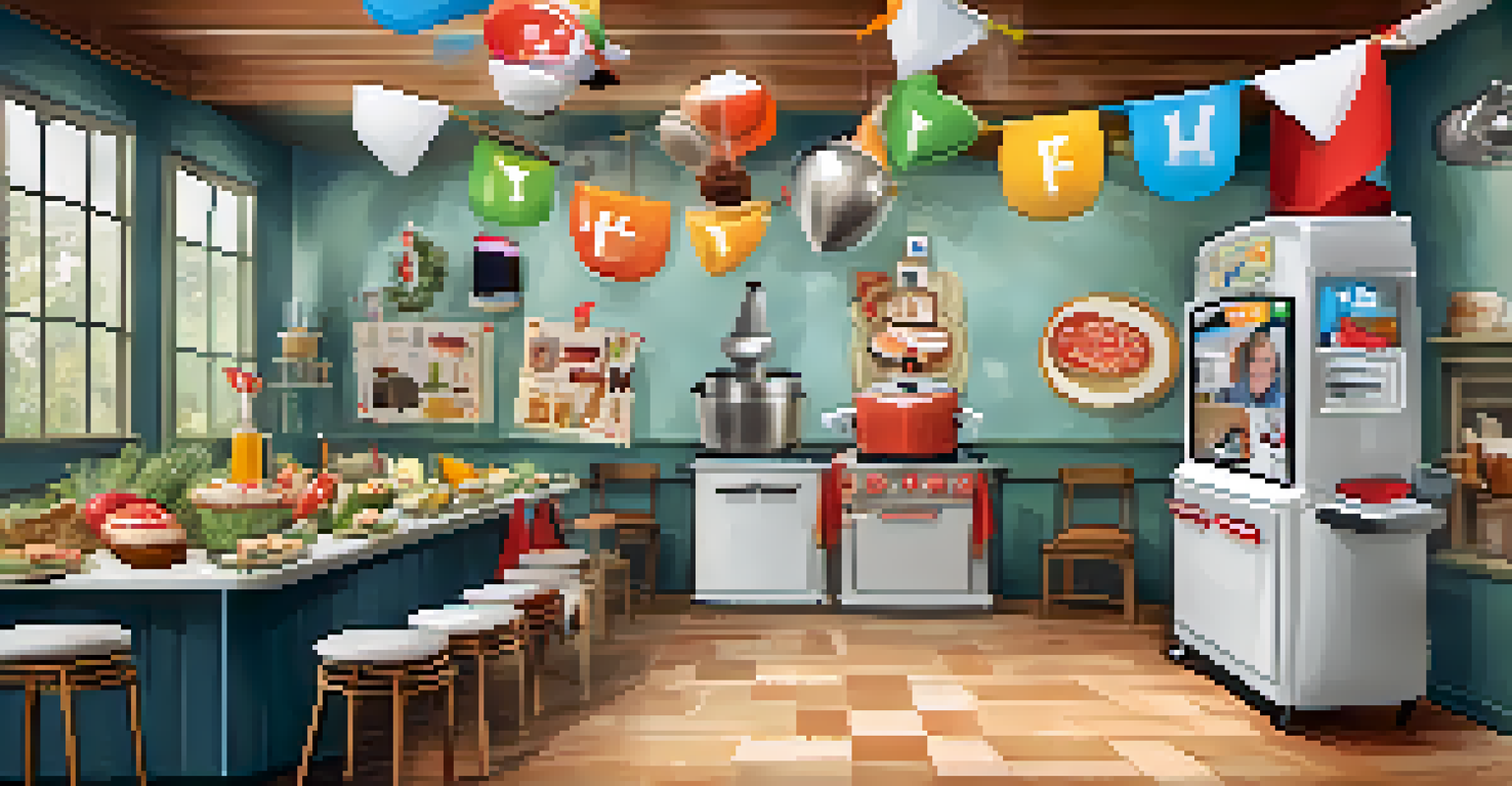Cooking Class at Home: Tips for Hosting a Fun Culinary Event

Choosing the Right Theme for Your Cooking Class
One of the first steps to a successful cooking class is picking a theme. This could range from Italian pasta-making to sushi rolling, or even a dessert-focused class. A well-defined theme not only sets the tone for the event but also helps you plan the menu and activities accordingly.
Cooking is like love. It should be entered into with abandon or not at all.
Imagine hosting a taco night, where guests can customize their own tacos with a variety of toppings. This allows for creativity and personalization, making it more engaging. Plus, it gives everyone the chance to explore different flavors and culinary techniques.
Selecting a theme also makes it easier to gather necessary ingredients and tools. It creates a cohesive experience that guests will remember, making your cooking class a truly enjoyable event.
Gathering Ingredients and Supplies for Success
Once you've settled on a theme, it’s time to gather your ingredients and cooking supplies. Make a detailed shopping list that includes everything you'll need, from spices to main ingredients. This will save you time and prevent last-minute dashes to the store.

Consider sourcing fresh, local ingredients if possible. Not only does this support local farmers, but fresh produce can elevate your dishes significantly. Plus, there's something special about cooking with ingredients that are in-season and bursting with flavor.
Choose a Theme for Your Class
Selecting a theme helps define the cooking class experience and guides menu planning.
Don't forget to prepare your cooking space and tools ahead of time. Ensure you have enough cookware, utensils, and workspace for everyone to feel comfortable while cooking. A well-organized kitchen sets the stage for a fun and stress-free experience.
Creating a Welcoming Atmosphere for Guests
The atmosphere of your cooking class plays a crucial role in how much fun everyone has. Start by inviting your guests in with a warm greeting and perhaps a refreshing drink to kick things off. This sets a friendly tone right from the beginning.
The only real mistake is the one from which we learn nothing.
Consider decorating your kitchen or dining area to match the theme of your class. For instance, if you’re focusing on Italian cuisine, you might play some Italian music in the background and use table settings inspired by Italy. This enhances the overall experience and immerses your guests in the culinary journey.
Lighting also matters; soft, warm lighting can make a space feel more inviting. Encourage guests to mingle and chat as you begin, fostering a sense of community that will make the cooking experience even more enjoyable.
Planning the Menu: Simple and Delicious Dishes
When planning the menu for your cooking class, simplicity is key. Aim for dishes that are not only delicious but also easy to prepare, ensuring that everyone can participate without feeling overwhelmed. Think about recipes that involve teamwork, like making pizza from scratch.
Offer a variety of options to cater to different dietary preferences and restrictions. Having vegetarian or gluten-free options ensures that all guests feel included and can enjoy the meal together. This also sparks conversations about food and personal preferences.
Create a Welcoming Atmosphere
A warm and inviting environment enhances guest engagement and enjoyment throughout the class.
It’s also wise to have a backup plan in case something doesn't go as expected. Prepping a simple dessert, for example, can be a great way to wrap up the class, ensuring your guests leave on a sweet note, regardless of how the main dishes turned out.
Incorporating Interactive Elements for Engagement
One of the best ways to keep your cooking class engaging is by incorporating interactive elements. Encourage guests to participate actively, whether it’s chopping vegetables or mixing ingredients. This hands-on approach fosters interaction and makes the experience much more enjoyable.
Consider adding a fun competition element, like a ‘best taco’ contest if you’re doing a taco night. Friendly competition can spark excitement and creativity, pushing everyone to put their best foot forward while cooking.
Make sure to celebrate everyone’s efforts at the end of the class, perhaps with a group taste test or a toast to the meal you’ve all created together. This not only builds camaraderie but also ensures that everyone leaves with a sense of accomplishment.
Capturing Memories: Photos and Videos
Don’t forget to capture the fun moments of your cooking class! Designate someone to take photos or videos throughout the event. This helps document the laughter, cooking chaos, and the delicious dishes created, serving as great memories for everyone involved.
You might even consider setting up a fun photo booth area with quirky props related to cooking. This adds an extra layer of entertainment and encourages guests to let loose and enjoy themselves.
Engage with Interactive Elements
Incorporating hands-on activities and friendly competitions keeps participants actively involved and fosters a sense of community.
After the class, share the photos with your guests as a little thank-you gift. It's a lovely way to keep the memories alive and may even encourage them to host their own cooking classes in the future.
Celebrating the Meal: Enjoying Together
After all the hard work in the kitchen, it's time to enjoy the fruits of your labor. Set up a communal dining space where guests can sit together and savor the dishes they’ve created. Sharing a meal is one of the best ways to bond and celebrate the effort everyone put in.
Encourage your guests to share their thoughts about the dishes, what they enjoyed most about the class, and any tips they might take home. This not only enhances the dining experience but also fosters connections among guests.

Consider pairing your meal with some beverages that complement the food. Whether it’s wine, cocktails, or mocktails, the right drink can elevate the dining experience and make the meal feel like a special occasion.
Following Up: Staying Connected Post-Class
Once your cooking class has wrapped up, don’t let the connections fade away. Follow up with your guests through a thank-you email, perhaps including some recipes from the class or links to your favorite cooking resources. This shows appreciation and keeps the culinary conversation going.
You might also consider creating a group chat or social media group where everyone can share photos of their cooking adventures at home. This not only keeps the spirit of your class alive but can inspire future get-togethers.
Lastly, don’t hesitate to ask for feedback on the class. This will help you improve future events and make them even more enjoyable for your guests. Plus, it shows that you value their opinions, fostering a sense of community.